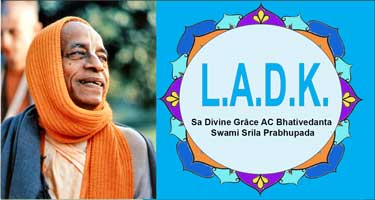SRIMAD-BHAGAVATAM 7 CHAPTER 15 TEXT 31

deśe śucau same rājan
saṁsthāpyāsanam ātmanaḥ
sthiraṁ sukhaṁ samaṁ tasminn
āsītarjv-aṅga om iti
TRANSLATION
My dear King, in a sacred and holy place of pilgrimage one should select a place in which to perform yoga. The place must be level and not too high or low. There one should sit very comfortably, being steady and equipoised, keeping his body straight, and thus begin chanting the Vedic praṇava.
PURPORT
Generally the chanting of oṁ is recommended because in the beginning one cannot understand the Personality of Godhead. As stated in Śrīmad-Bhāgavatam (1.2.11):
vadanti tat tattva-vidas
tattvaṁ yaj jnānam advayam
brahmeti paramātmeti
bhagavān iti śabdyate
“Learned transcendentalists who know the Absolute Truth call this nondual substance Brahman, Paramātmā or Bhagavān.” Unless one is fully convinced of the Supreme Personality of Godhead, one has the tendency to become an impersonalist yogī searching for the Supreme Lord within the core of his heart (dhyānāvasthita-tad-gatena manasā paśyanti yaṁ yoginaḥ [SB 12.13.1]). Here the chanting of oṁkāra is recommended because in the beginning of transcendental realization, instead of chanting the Hare Kṛṣṇa mahā-mantra, one may chant oṁkāra (praṇava). There is no difference between the Hare Kṛṣṇa mahā-mantra and oṁkāra because both of them are sound representations of the Supreme Personality of Godhead. praṇavaḥ sarva-vedeṣu. In all Vedic literatures, the sound vibration oṁkāra is the beginning. Oṁ namo bhagavate vāsudevāya. The difference between chanting oṁkāra and chanting the Hare Kṛṣṇa mantra is that the Hare Kṛṣṇa mantra may be chanted without consideration of the place or the sitting arrangements recommended in Bhagavad-gītā (6.11):
śucau deśe pratiṣṭhāpya
sthiram āsanam ātmanaḥ
nāty-ucchritaṁ nātinīcaṁ
cailājina-kuśottaram
“To practice yoga, one should go to a secluded place and should lay kuśa grass on the ground and then cover it with a deerskin and a soft cloth. The seat should neither be too high nor too low and should be situated in a sacred place.” The Hare Kṛṣṇa mantra may be chanted by anyone, without consideration of the place or how one sits. Śrī Caitanya Mahāprabhu has openly declared, niyamitaḥ smaraṇe na kālaḥ. In chanting the Hare Kṛṣṇa mahā-mantra there are no particular injunctions regarding one’s sitting place. The injunction niyamitaḥ smaraṇe na kālaḥ includes deśa, kāla and pātra—place, time and the individual. Therefore anyone may chant the Hare Kṛṣṇa mantra, without consideration of the time and place. Especially in this age, Kali-yuga, it is very difficult to find a suitable place according to the recommendations of Bhagavad-gītā. The Hare Kṛṣṇa mahā-mantra, however, may be chanted at any place and any time, and this will bring results very quickly. Yet even while chanting the Hare Kṛṣṇa mantra one may observe regulative principles. Thus while sitting and chanting one may keep his body straight, and this will help one in the chanting process; otherwise one may feel sleepy.

